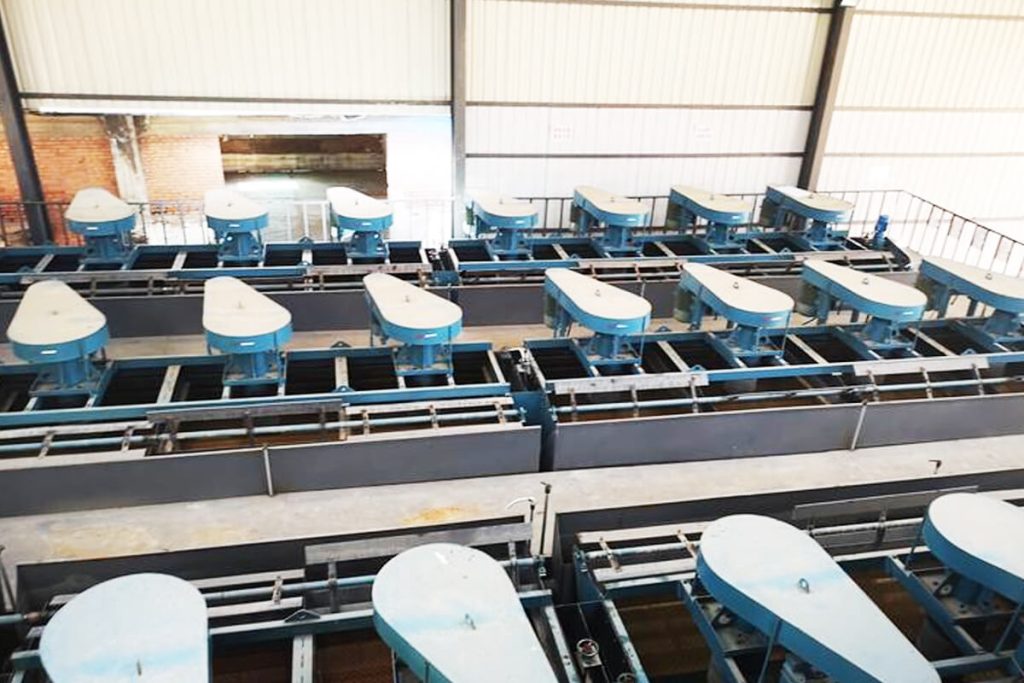Three Refractory Molybdenum Ore Types And Beneficiation Methods

- Talc-type molybdenum ore beneficiation method
Talc-type molybdenum ore contains a certain amount of talc, and the floatability of the two minerals is very similar. The main beneficiation methods involve a combination of flotation and chemical leaching. This method effectively separates molybdenum minerals from gangue minerals to obtain higher molybdenum concentrations. Using specific reagents, such as collectors and frothers, in the flotation process can optimize the selectivity of molybdenum recovery while minimizing the loss of valuable minerals.
In addition, using advanced technologies such as high-pressure roller grinding (HPGR) during the crushing stage can enhance the release of molybdenum particles from the ore matrix. This improved release facilitates subsequent beneficiation processes, thereby increasing overall recovery rates.
- High oxidation rate molybdenum ore beneficiation
A two-stage flotation process is mainly used to improve the beneficiation of molybdenum ores with high oxidation rates. By flotating the sulfide minerals in the ore and re-floating the oxide minerals, this method can effectively separate and recover both types of minerals. The technology exploits differences in surface properties between sulfide and oxide minerals to improve molybdenum recovery.
Another strategy is to use new collectors explicitly designed for molybdenum oxide ores. These collectors are adept at selectively interacting with oxide minerals while minimizing their interaction with other gangue materials, thereby increasing separation efficiency.
- Carbon-containing nickel-molybdenum ore beneficiation method
The beneficiation of carbonaceous nickel-molybdenum ores mainly adopts a comprehensive method that combines pre-oxidation with advanced flotation technology. This process presents unique challenges, as the presence of carbonaceous materials impacts the recovery of valuable minerals. An innovative way to solve this problem is through pre-oxidation, which oxidizes carbonaceous materials before further processing. This not only improves mineral separation efficiency but also improves overall process economics by reducing reagent consumption.
Additionally, combining advanced flotation technologies such as froth and column flotation has shown promising results in separating carbon from nickel and molybdenum minerals. By optimizing operating parameters such as pH and particle size distribution, higher-grade concentrates can be obtained with minimal environmental impact. In addition, automated control systems can enhance process stability and ensure consistent performance throughout the beneficiation process.


